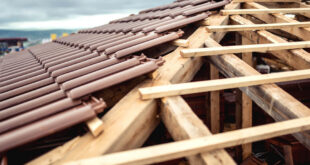
If you haven’t been reminded of it in a while, Mother Nature is always in charge. As soon as you forget this fact, she’ll remind you of it in a big way.
There are many devastating storms that can do huge amounts of damage to your home and property, ranging from tornadoes to hurricanes and several others.
But one of the most damaging storms from a property standpoint are those annoying summertime weather events that drop small to medium sized balls of ice from the heavens. And if you’ve ever been through a major hail storm, you’ve likely experienced the often severe damage that comes from these types of events.
But if you’re going through a hail storm for the first time, it’s good to know what to expect once the clouds depart and the weather returns to normal.
There’s a good chance you’re going to have damage that needs to be dealt with, but your homeowners insurance will likely cover most issues that result due to the hail storm.
So once the storm has passed, the first thing you should do is head outside and do a preliminary walk through of your property to assess any damage that may have been done.
It’s a good idea, however, to take certain precautions before walking around your property. If the storm was a particularly nasty one, there could be downed power lines or broken glass littered throughout your yard.
So be sure to wear a good pair of shoes and maybe even a pair of rubber gloves before you go poking around, and call the power company immediately if you see any downed or dangling power lines.

Take Good Notes
It’s a good idea to take a pad and paper, or perhaps even a tape recorder, with you and write or record your notes and thoughts as you’re walking around your property.
Write down the date, the time of day, how strong the storm was and the particular damage that you’re taking note of.
It’s also very important to write down what you see and take some photos before cleaning up the damage. The insurance company will want to see photos and/or videos of the damage to expedite your claim, so don’t give in to the temptation and start cleaning up before you’ve thoroughly documented everything to your satisfaction.
You may also want to take photos of the actual hail stones, if they’re still visible, so the insurance company will have a good idea of what actually caused the damage you’re documenting in your notes and photographs.
Protect Against Further Damage
Once you’ve taken good notes and documented the damage with photos and videos, the next thing you’ll want to do is protect your home and property against further damage.
If the hail storm caused damage to your roof, for example, you’ll want to get a tarp and cover up any holes and/or leaks to prevent water from coming into your home in the event another rain storm hits before the damage can be repaired.
Additionally, board up any broken windows and move wet items into a different and drier location. If your vehicle was damaged, consider covering it with a tarp as well.
If there are damages that need to be addressed right away, go ahead and take care of them but be sure to keep all receipts so you can turn them over to the insurance company later. You might also want to contact your insurance agent first to ensure that what you’re taking care of is covered under your policy.
Inspecting Your Roof For Damage
When inspecting your roof for damage done by the storm, your own personal safety should always be the number one priority.
You’ll want to wear a good and sturdy pair of shoes and use extreme caution when climbing up on the roof of your home. Make sure your ladder is in good condition and that you have someone on the ground at all times to spot you and assist you if and when the need arises.
You’ll also want to have a marker or piece of chalk with you to clearly identify where the damage has occurred and then document those areas with photographs for the insurance agent.
While you’re up on the roof, look for dents in metal roofs, cracks, discoloration and even loose granules. These are all areas that should be documented for a possible insurance claim.
Metal roofing is typically easier to repair versus shingle or tile. Metal roofs are usually put together in sheets so replacement is somewhat easier than other types of roofing materials.
Filing An Insurance Claim
Once you have all of your documentation in order, visit with your insurance agent or adjuster and begin the paperwork that you’ll need to be reimbursed or to begin repairs.
If you’re adequately covered for these types of weather events, and you’ve taken good notes and photographs, you should be in good shape to get these repairs done in a timely manner.
 A Very Cozy Home Home Decor Tips and Ideas
A Very Cozy Home Home Decor Tips and Ideas 